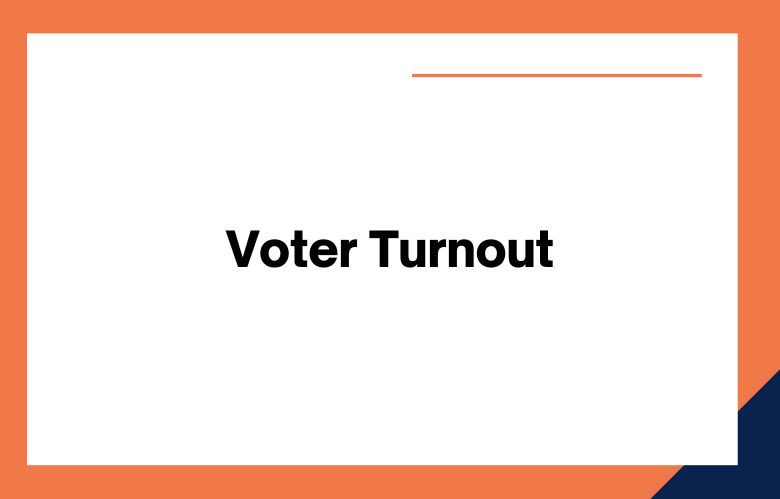As a passionate advocate of political engagement, I am always looking for ways to improve voter turnout. Political parties can play a vital role in this process by implementing effective strategies to encourage voting.
While many factors influence voter behavior, organizations can increase their influence by leveraging specific tactics that resonate with their target audiences.
This post explores voter turnout strategies that political parties can utilize to increase civic participation and improve community engagement.
From digital outreach to volunteer mobilization, we explore tactics proven effective in helping parties reach their voter engagement objectives.
What are Voter Turnout Strategies For Political Parties?
Voting is an integral part of democracy and is the bedrock of a functioning democratic state. Political parties thrive on high voter turnout as it helps them gain traction and win elections.
Political strategists are assigned to develop voter turnout strategies for political parties to maximize their presence on the ballot.
Effective voter turnout strategies require comprehensive planning and execution to reach the maximum number of potential voters. We will discuss some of the most effective voter turnout strategies for political parties.
The Impact of Voter Turnout Strategies on the Success of Political Parties
Every political party aspires to have a high voter turnout during elections. After all, it is the decisive factor that determines who gets elected and who doesn’t.
Therefore, political parties must identify and implement successful voter turnout strategies. This post will discuss some of the most effective voter turnout strategies political parties can utilize to increase their chances of winning.
Boosting Voter Turnout: Effective Strategies for Political Parties
One of the most critical components of any democracy is voter turnout. The higher the turnout, the stronger the democracy.
When more people vote, the elected government is more faithful to the people’s will. A higher turnout also means a more engaged electorate and popular mandate.
This is where political parties come in. Political parties and candidates are responsible for encouraging people to vote and helping them understand why it matters. We will explore voter turnout strategies that political parties can use.
Best Practices for Voter Turnout Strategies For Political Parties
Digital Outreach:
Given the widespread use of digital technology, political parties can use digital platforms to reach out to potential voters using social media platforms and email lists.
A social media campaign can reach a massive audience and be targeted to specific demographics, increasing the chances of success.
For example, party posts on Facebook, Twitter, or Instagram should be tagged with appropriate keywords to attract the audience.
Get-Out-the-Vote Efforts:
Get-out-the-vote (GOTV) campaigns are focused on ensuring eligible voters make it to the polls. These campaigns typically involve voter registration drives, voter education efforts, and transportation assistance to polling locations.
The strategy is to remove any obstacles to voting and improve accessibility. GOTV can leverage local and social media platforms to spread awareness and drive voter engagement.
Targeted Marketing:
Political parties can create targeted marketing campaigns that speak to specific groups or issues relevant to their constituents.
This approach requires understanding the electorate, the party’s priorities, and a focus on specific issues.
Poling data and demographic information can enable parties to provide messaging that resonates with people’s needs and opinions.
Volunteer Mobilization:
Volunteers are vital assets for political parties and can help drive voter turnout. Volunteer strategies may include canvassing door-to-door, making phone calls, and text messaging.
Volunteers should be trained, motivated, and well-informed about party policies and priorities to ensure their messages are consistent and effective.
Events and Rallies:
Party events and rallies can be a powerful tool to engage supporters. These events can spotlight local leaders and provide opportunities for constituents to ask questions or share their experiences.
These events can engage the public, motivate supporters to vote, and spread the word about the party’s priorities.
Voter Turnout Strategies For Political Parties
Voter turnout is an essential factor in any election. The voters have the power to choose their representatives in the government.
Every political party wants to increase its voter turnout to win the elections. However, it is challenging to motivate every eligible voter to go out and vote on Election Day.
We will discuss several strategies political parties can use to increase and maintain voter turnout.
Early voting:
Political parties can encourage supporters to vote early to avoid long lines and wait times on Election Day.
Early voting has become a popular option in some states, where voters can vote in person during a designated period before Election Day.
Political parties can set up early voting stations in areas with high concentrations of supporters to boost voter turnout.
Social media campaigns:
Social media is a powerful tool for reaching out to potential voters. Political parties can use their social media platforms to spread awareness about the importance of voting and to encourage their followers to go out and vote. They can use catchy slogans and hashtags to create a buzz around their campaign.
Door-to-door campaigning:
Door-to-door campaigning is an effective way to reach out to potential voters. It involves canvassing a neighborhood to talk to voters about the issues that matter to them, answer their questions, and encourage them to vote. Political parties can train their volunteers and activists to conduct door-to-door campaigning to increase voter turnout.
Voter education programs:
Many eligible voters only vote if they need more information or clarification about the voting process.
Political parties can organize voter education programs to educate voters about the voting process, voting rights, and the importance of voting.
These programs can be held in community centers, schools, and colleges and conducted in multiple languages to reach a broader audience.
Mobile apps:
Mobile apps have become an integral part of our lives. Political parties can leverage this trend by creating mobile apps to help voters find their polling stations, access their voting history, and receive reminders about upcoming elections.
These apps can inform voters about candidates and their positions on critical issues.
Conclusion:
Effective voter turnout strategies are critical for political parties to engage with their supporters and drive civic participation.
Multiple tactics are available to encourage voter engagement, from digital outreach to volunteer mobilization.
Political parties should focus on targeted messaging that resonates with their constituents and provide relevant information to help them articulate their vision and goals.
By improving voter turnout, parties can positively impact the community and provide ongoing support for their platforms. By following these tips, we can build a more robust, more vibrant democracy.
Call: +91 9848321284
Email: [email protected]











